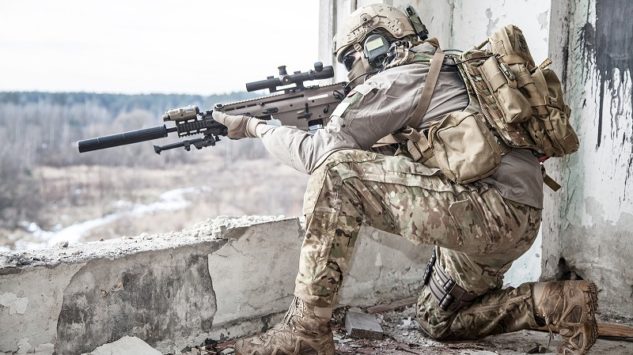Issue Briefs

America Needs to Think About the Next War—Before It’s Too Late (From The National Interest)
Douglas Macgregor
February 22, 2018
Inside democratic societies, shrewd and far-sighted defense strategies focused on modernizing armed forces for future wars are always difficult to achieve. Thus, when a modernization strategy succeeds as it did in 1991 with the Battle of 73 Easting, Americans should pay attention.
At 4:18 PM on 26 February 1991, the two lead cavalry troops of an 1,100-man Armored Cavalry Squadron consisting of Abrams tanks, Bradley infantry fighting vehicles and supporting artillery charged out of a sandstorm and attacked a full-strength 2,500-man Iraqi Republican Guard Brigade with T-72 tanks, BMPs and artillery in the Iraqi desert along the North-South grid line referred to as “73 Easting.” In the extreme violence that ensued, courageous and intelligent American soldiers applied a new, as yet untried combination of armor, mobility and firepower that crushed the Iraqi force.
By historical standards 73 Easting was an exceptional “first battle.” Most first battles from Bull Run and Kasserine Pass to the Ia Drang Valley ended badly. The Army’s senior leaders relearned the same bitter lesson: “Every successful business model, or military organization for combat, works until it doesn’t.”
The Battle of 73 Easting was different. The Armored Cavalry’s winning combination of organization, technology and human capital—the new, 1991 Army business model—was created in the mid-1970s, a time of draconian defense cuts when U.S. warplanes couldn’t fly for a lack of spare parts, ships sat in port without fuel and soldiers exercised with tanks and guns that differed little from their WWII predecessors. However, when the funding for Army modernization finally arrived in the 1980s, the really hard work—thinking, experimentation and evaluation—was accomplished. New fighting formations could be fielded.
New business models don’t invent themselves. And devising new joint operational concepts along with new fighting formations assimilating new technologies and employing new tactics is hard work.
Fortunately, the new national military strategy points the way: Air Force, Naval and Army Forces must move away from low intensity conflict operations in permissive environments. New forces must be built that can deter, and, if necessary defeat capable nation-state opponents in high intensity conventional conflict. The new strategy also discards the doctrine of brute force—blind faith in the superiority of numbers—in favor of lethality and capability, not numbers in future force design.
Unfortunately, inside the U.S. Army the flood of cash from congress—$192 billion with $37 billion for modernization—is replacing the brute force theory with a fatally flawed strategy: impetuous, undisciplined spending to make the old Army fight better. The Army’s senior leaders are spending $27 billion of the Army fiscal 2019 modernization dollars onlegacy systems; the contemporary equivalent of upgrading Sherman Tanks in the 1980s for war in 1991.
Put differently, the money has arrived as it did during the 1980s, but in contrast to the Army’s senior leaders in the 1970s, today’s senior leaders have not done the hard work to construct the new business model:
– Identify the form that future warfare will take and the new warfighting missions that joint operations to deter, neutralize or destroy new threats will demand;
– Perform the analysis to link the national strategy with operational concepts and desired capabilities;
– Develop the new joint warfighting organization for combat—the new business model—through unconstrained experimentation and rigorous field testing;
– Build the new command and control structure to integrate capabilities across service lines and guarantee unity of effort;
– Ensure capability integration and shared technological development with aerospace and maritime forces (R, D&A).
Read the full article at The National Interest.
 |
Col. (ret) Douglas Macgregor is a Global Policy Institute Senior Adviser. He is a decorated combat veteran, the author of five books, a PhD and the executive VP of Burke-Macgregor Group LLC, a defense and foreign policy consulting firm in Reston, VA. Macgregor retired with the rank of Colonel in 2004. He holds an MA in comparative politics and a PhD in international relations from the University of Virginia.
The views and opinions expressed in this issue brief are those of the authors and do not necessarily reflect the official policy of GPI. |